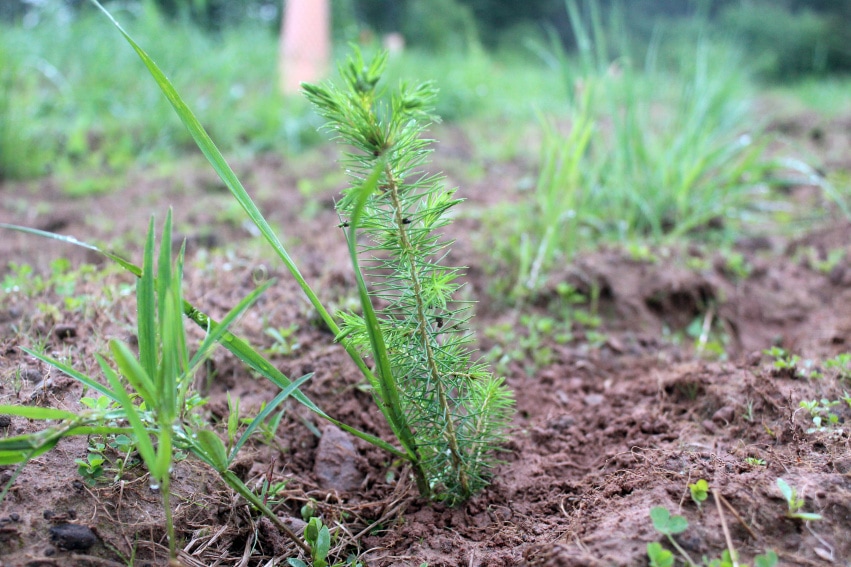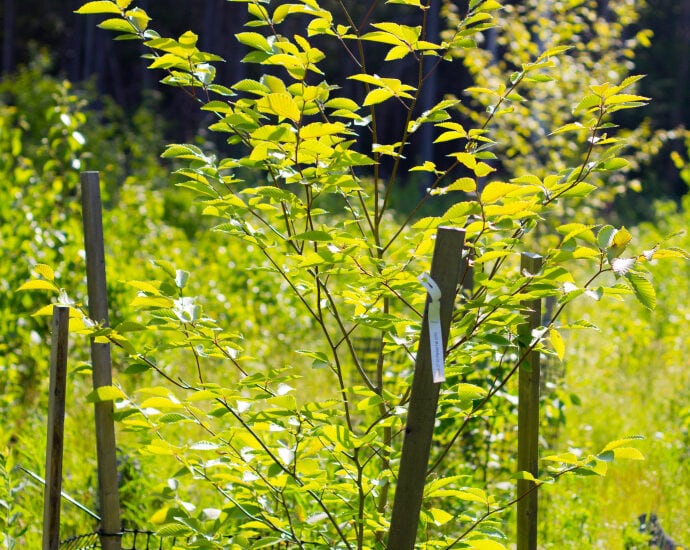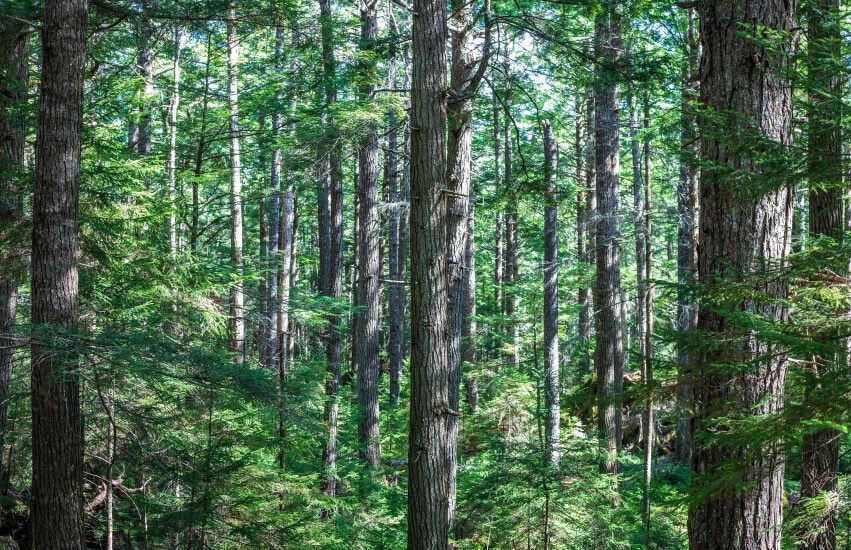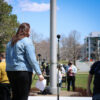
KJIPUKTUK (Halifax) – Few things are as unimpeachably positive as tree planting, a relic of old school environmentalism often hailed as a panacea, a clean slate, an uncomplicated feat of social engineering just waiting to scrub our sins from the atmosphere. So often has it been touted as a solution to the climate crisis that our federal government has committed to plant 2 billion of them from now until 2030 for the express purpose of absorbing and sequestering carbon, with the first few thousand going in the ground this spring.
I was encouraged when this news first broke in 2019; I think we all were, struck by the magnitude of the undertaking and the glittering green future it would surely vanguard, with solar panels, wind turbines, electric cars and waste-free grocery stores. But this notion of 2 billion trees doesn’t survive even modest scrutiny. For one thing, it won’t work.
Natural Resources Canada estimates these 2 billion trees will sequester 12 megatonnes of carbon annually by 2050. For context, Canada emitted over 729 megatonnes in 2018 alone, so we presently emit as much carbon every six days as these trees are expected to absorb every year, 29 years and $3.16 billion from now. And even this simple calculation is dangerously misleading.
We are not grappling with a climate crisis for lack of trees. Our planet is warming because we burn fossil fuels, tapping carbon stores once safely removed from the atmosphere such as oil, coal and natural gas. Yes, we have cut down forests in the past and they have released carbon also, but if those forests regrow, or are replanted, they can only realistically absorb as much carbon as they themselves released. Plant a thousand, a million, a billion trees and they can only account for the carbon released when we initially cut them down. They will not – in fact, they cannot – absorb any of the carbon emitted from the burning of fossil fuels. Those debts belong to two separate banks.
The final nail in this climatic coffin is time. Not only do Canadian forests need centuries of uninterrupted growth to maximize their sequestration of carbon – time we do not have – but the moment we cut them down, their carbon is lost, returned again to the apocalyptic calculus of climate change. In order to derive even a modest carbon benefit from these 2 billion trees, we must ensure they are protected for the duration of the climate crisis, which, in rough figures, will be with us for a thousand years. Protecting any given forest on the scale of millennia is something no industrialized nation has ever accomplished.
Thrusting a few seedlings in the ground and washing our hands of acidic soil might sound straightforward, but in reality, few things are more complicated than the carbon cycle, especially where it intersects the biosphere. It would be very easy to do this wrong. And yet, after all these ugly truths, I’ve heard the notion of 2 billion trees defended time and again by experts in forest ecology and carbon, making arguments and recommendations considerably more nuanced than those of our federal government. These trees aren’t just useful, they tell me, but necessary.
The Good with The Good
If you view 2 billion trees purely from the perspective of carbon, you’ll be disappointed, but plant them also to secure soils and riverbanks, to provide habitat for species-at-risk, to construct green space for a growing number of urban residents, to diversify existing forests, perhaps even to distribute and recover tree species which are themselves struggling (American elm, butternut, White ash, American beech), then you’ve checked multiple boxes with the same initiative. This multiple values approach is key to successful tree planting, according to Gary Schneider of the MacPhail Woods Forestry Project on Prince Edward Island.
“If I get a positive result from one action,” said Gary, “that’s good. If I get two or three or four positive results from that same action, that’s fantastic. So if I plant trees with the potential of getting a high value log, great, but if I’m also storing carbon, creating wildlife habitat, and creating places where people can come and enjoy the woods, meditate, feel good about themselves, run with their kids, that’s excellent. I think you can get a lot of stuff back from one action.”

The American beech might be the prime example, once the dominant tree in the Maritimes before Beech Bark Disease devastated the species in 1890. Some of our American beech (about 3.3 per cent) turned out to be naturally immune to this invasive ailment, so immune, in fact, that the Canadian Forest Service began breeding them in the late 2000s, establishing beech seed orchards from disease resistant specimens. These orchards, now approaching maturity in Kejimkujik, Fundy and Prince Edward Island national parks, will start generating seeds any year now. Here’s a native tree, down on its luck, almost ready for mass replanting. If distributed widely and planted intelligently, it could secure watersheds, benefit wildlife, restore a member of regional biodiversity and yes, also store carbon. Multiple values at work.
Gary plants trees for a living and is in constant pursuit of multiple values. The MacPhail Woods Forestry Project grows and distributes native flora across PEI and has for 30 years, reconstructing ecosystems from the ground up so they might resemble their pre-settlement selves. If Gary steps into young and biologically impoverished woods, dominated by short-lived species like White spruce, Trembling aspen, Pin cherry, Balsam fir and Grey birch, he introduces Sugar maple, Yellow birch, Red spruce, Red oak, ironwood and others, then gets started on the understory, bringing in native shrubs, ferns and flowers missing from the ecosystem. The forests he builds on public and private land are as biologically diverse as he can make them, and thus stronger in the face of climate change and disturbance mechanisms like hurricanes and insect infestations. He’s playing the long game, making decisions which might just be relevant a thousand years down the road.

Were PEI faced with planting its share of the 2 billion trees tomorrow, he’d insist they go to watershed groups restoring rivers, to land trusts like the Nature Conservancy of Canada or Island Nature Trust, to churches, schools and heritage sites, onto private property protected under land easements, anywhere they could grow relatively undisturbed. Nova Scotia has its equivalents.
As it would turn out, Gary’s insistence on diversification could maximize overall carbon storage. Jim Fyles is a forest ecologist recently retired from McGill University and another cautious advocate of the 2 billion trees. But if we plant them in neat and tiny rows using only one or two species of tree, he said, we’ve accomplished very nearly nothing for climate or ecology. Anyone walking a modern Red pine plantation will recognize immediately the suffocating darkness such monocultures impose. The canopy is closed and uniform, and all available space beneath is dead and empty. Plantations encourage no subcanopy, no understory, no diversity of niches or wildlife habitat.
If, however, we build forests with a diversity of species, tree and otherwise, we end up with multiple layers using all available sunlight. The tallest trees, like aspen, form the canopy and whatever light they don’t capture falls to the sub-canopies, supporting more shade tolerant species like maple and birch. From there, what light reverberates to the understory feeds mosses, bushes, ferns, flowers and lichens. And then, of course, wildlife exploits the plethora of available habitat. In this way, more biologically diverse forests support more living biomass, thus holding more carbon. So, whether the 2 billion trees are used to diversify impoverished forests or establish entirely new ones, the key is diversity.

Jim took part in government workshops on the 2 billion tree initiative back in March of 2020, workshops which were halted, mid session, by the outbreak of Covid-19. From this mess of academics, foresters, NGOs, First Nations and government representatives, the message of diversity was consistent. Natural Resources Canada is aware of the importance of planting with multiple tree species, said Jim, but he cannot say what they’ll do with this information. And of course, there’s been no talk of planting shrubs, ferns and flowers. Not quite as dramatic.
Among the multiple values of these 2 billion trees, Jim adds public engagement. Between now and 2050, he said, it is incredibly important, especially in urban areas, that Canadians are intimately involved with solving the climate crisis. They need to bring the issue home with them, to keep it front and centre in their minds, and yes, to plant it in their backyards. If adequately implemented, these 2 billion trees could be a direct link between citizens and the atmosphere, and a faithful reminder of progress. If these trees encourage people, subliminally, to bike more and eat less meat, so much the better.
“I’m cautiously optimistic,” Jim told me, “that if we talk about trees in our urban and suburban areas, and plant trees, it will not only raise the tree issue with people but the climate change issue. The payoff might not be the tree itself, but instead something in the back of our minds that we pay more attention to, say, if we change our car for example, should we get an electric one?”
The Rollout
When I reached out to Natural Resources Canada, they said all the right things – these trees will not be used to replant forests we just cut down; biodiversity will be incorporate into the decision-making process; efforts will include primarily native tree species; the enhancement of existing forests is very much on the table; opportunities for permanent protection of these trees will be prioritized; partnering organizations have to justify the value of their various planting objectives; and trees will be monitored once they’re in the ground for long term survival. These are all objectively good things, but I get the impression this project is something of a moving target, even for the government. It’s being overseen by a steering committee of experts which hasn’t yet been appointed, and relies on claims of climatic benefit which are, at best, overstated.
There’s nothing for it – we must stop burning fossil fuels, across every sector of every industry as soon as possible. Two billion trees will not change that, will not mitigate that, will not even buy us time. It’s a good idea being oversold as a silver bullet, a legitimate push for healthier watersheds, communities and ecosystems taken to greenwashing extremes. We can make good use of these trees, but only if handled properly, and kept squarely in context.
Zack Metcalfe is a freelance journalist, columnist and author active across the Maritimes. This is part 1 of a two-parter. Next, All hail the woods, more about forests, carbon, and sustainable forestry, which will be published in the next couple of days.
Check out our new community calendar!
With a special thanks to our generous donors who make publication of the Nova Scotia Advocate possible.
Subscribe to the Nova Scotia Advocate weekly digest and never miss an article again. It’s free!




Kendall Worth here!
Some people who I had interviewed for different stories through my journalism have told me “Going out to somewhere in the Country and planting trees is something they would be interested in”
I say for those who are physically and mentally able to do this type of work of course, why Not?
A great opportunity to get outside into fresh air and Exercise.